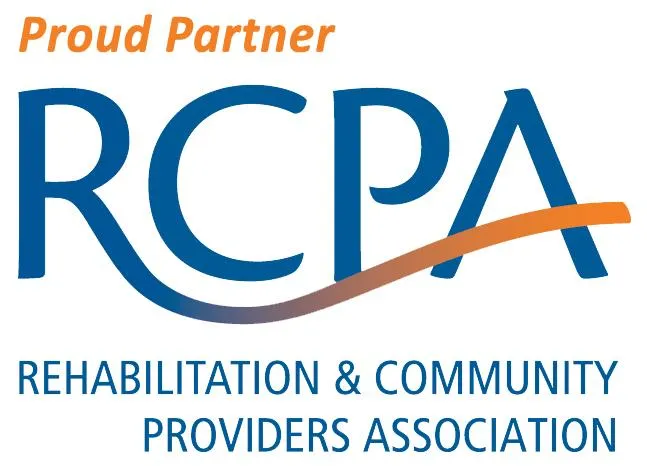Tailored HR Solutions as Unique as Your Business
Expert consulting and service to elevate your HR from a headache to a value driver.
Does Your HR Function Make the Grade?
Take our 5-minute quiz and evaluate the effectiveness of your HR function.

How We Help
We Focus on Your HR Needs,
So You Can Focus on Your Mission.
At Quantum Strategies, we understand that effective human resource management is the cornerstone of every successful business, regardless of size. Our mission is to provide tailored HR solutions that align perfectly with your unique business needs and growth stage.
Our Services
Navigating Change with Confidence: Quantum Expert HR Solutions
From Policy Assistance to Leadership Succession Planning, Quantum Strategies is Your Ultimate HR Resource to Solve Your Business Challenges.
HR Operational
Assessments
Unlock the full potential of your HR department. Our collaborative approach brings clarity and efficiency to your HR operations, providing a thorough analysis of your department's structure, costs, effectiveness, and needs.
Comprehensive Analysis: Detailed evaluation of your organization, workgroups, and individual roles for optimized efficiency.
Objective Insights: Receive a clear blueprint highlighting your HR department's strengths, weaknesses, and gaps.
Strategic Recommendations: Actionable plans focusing on technology utilization, communication enhancement, and leveraging department strengths.
HR Consulting and Managed Services
Tailored to align with your unique needs, our HR consulting and managed services enhance operational efficiency and effectiveness, allowing you to focus on your core mission while we optimize your HR investment.
Expert Supplemental Support: Strengthen your existing HR team with specialized expertise to navigate complex HR landscapes.
Personalized, Agile Solutions: Customized services for organizations with or without HR teams, adaptable to your specific requirements.
Goal-Oriented, Clear Communication: Delivering precise, actionable strategies that align with your organization’s goals and ensure successful execution.
Custom HRIS Design and Integration
Revolutionize your HR data management. Our team will evaluate your current human resources technology stack, offer recommendations, and then integrate your new and existing systems with our cutting-edge technology, ensuring seamless data flow and optimized operational efficiency.
Seamless Integration: Connect legacy systems with modern platforms for streamlined data management.
Tailored Design: Custom HRIS solutions uniquely crafted to meet your specific business needs.
Advanced Analytics: Leverage data-driven insights for strategic decision-making and operational excellence.
“Successfully steering through the specialized HR challenges within organizations of all kinds demands expert understanding, strategic planning, and precise implementation. With comprehensive knowledge of these challenges and the right solutions, your business can stay focused and successful in their vital missions.”
William J. Rizzo

Who we Are.
We Focus on Your HR Needs,
So You Can Focus on Your Mission.
At Quantum Strategies, we recognize that proficient management of human resources is fundamental to the success of any enterprise, irrespective of its scale. Our objective is to deliver customized human resource solutions that are in perfect harmony with your distinct business requirements and developmental phase.
Constant Improvement
Commitment to Customers
High Level Of Knowledge
Best Service You Can Get



Why Choose Us
A True Partner to Solve Your Most Complex HR Challenges.
Empowering HR Innovation and Compliance
Commitment to 100% Client Satisfaction
People-First Approach

Peace of Mind:
Handle ongoing compliance with ease

Employee Satisfaction:
Build a positive workplace with engaged employees

Strategic Confidence:
Drive strategy with advanced analytics

Leadership Development:
Equip your team with the tools to lead

2,245 +
Happy Clients

25 +
Years Of Experience

120 +
Professional Team
Testimonials
The Quantum Commitment - 100% CLIENT SATISFACTION!
At Quantum, we understand that your satisfaction matters most, and The Quantum Commitment is our way of putting that understanding into action. Experience the difference with a team that is dedicated to making your satisfaction the cornerstone of our service. Because when you choose Quantum, you choose excellence, reliability, and a commitment to exceeding your expectations every time.
Our Resources
Unveiling Proven Strategies and Insights.
Discover actionable tips, expert advice, and industry insights to fuel your journey towards success.

Fostering a Psychologically Safe Workspace
As we navigate the complexities of the post-pandemic world, the importance of mental health in the workplace has surged to unprecedented levels. According to research from the
American Psychological Association, 81% of employees are now actively seeking workplaces prioritizing mental well-being.
Key Challenges Faced by Human Resources in Nonprofit Organizations
The nonprofit sector brings its own set of specialized difficulties, especially in the area of human resources (HR). Although these difficulties may share some common ground with those in the for-profit industry, they possess unique characteristics that require special attention from nonprofit leaders.
FOUND THESE HELPFUL?
Explore Additional Articles and Resources In Our Blog

The Art of Prioritization: How Leaders Achieve More with Less
"It is not enough to be busy, so are the ants. The question is: What are we busy about?" -Henry David Thoreau, Philosopher
CEOs, team leaders, and managers face constant pressure to drive profits, satisfy employees and clients, and innovate. While many excel in project and task management, success doesn’t always follow due to poor prioritization. To be effective, leaders must manage both the overall direction of a project and the individual tasks on a micro level.
Project Management vs Task Management
According to productmanager.org, product management is "the application of knowledge, skills, tools, and techniques to project activities to meet project requirements," while task management is "the process of identifying, monitoring, and progressing the work that needs to be done daily."
In simple terms, project management focuses on the overall project, while task management targets the specific objectives to be achieved on a daily, weekly, or monthly basis. Prioritizing tasks is key, as it helps evaluate their importance and positively impacts productivity. In business, prioritizing tasks is crucial to meet objectives, which lead to larger, end goals.
Evaluate current practices
Even if there are no task prioritization methods set in stone, our mind tends to sort out work in a particular order. Our mind's best way of giving some critical tasks important work ethic over others is subconsciously creating a prioritization plan we have created without realizing it. Take time to provide a thorough evaluation. Once we understand our current practices, they can be further developed or tweaked to understand tasks requiring attention.
Eisenhower Matrix, Method of Prioritization
When prioritizing to understand this method, we must first learn the difference between 'important' and 'urgent' tasks.
Important: "marked by or indicative of significant worth or consequence."
Urgent: "calling for immediate attention."
Dwight D. Eisenhower, as the 34th President of the United States, Dwight D. Eisenhower faced enormous pressure and numerous tasks. The key to managing this was his efficient use of prioritization methods. To do this, he created the Eisenhower Matrix, a priority list 1-4, a matrix that differentiated between important things vs. not important and urgent vs. not urgent; the goal of this method was to filter out the noise and focus on what was truly important.
Priority 1 tasks are both urgent and important.
Priority 2 tasks are important but not urgent.
Priority 3 tasks are urgent but not important.
Priority 4 tasks are neither urgent nor important.

Important/urgent tasks need to be done immediately and by the leader, e.g., crisis, deadline, problems
Important/not urgent tasks need to be done soon with a set timeline and by the leader, e.g., planning, strategy, and growth-related activities
Not important/urgent tasks are something a leader should be able to delegate, e.g., scheduling interviews, booking flights, and replying to emails
Not important/not urgent tasks are something that can be dropped or pushed to a later date, e.g., experimental ideas, sorting out junk mail, office improvements
These tasks can change from one quadrant to another very quickly, and it is important to monitor those changes.
"People who can focus get things done. People who can prioritize get the right things done." -John Maeda, American Designer
Leading Down the Chain of Command
Creating a leadership chain of command allows for effective delegation, letting you focus on critical tasks. As a leader, identify which tasks require your expertise and which can be delegated. Confidential or high-value tasks should remain with you, while delegation helps prioritize time-sensitive work.
Effective communication is essential when assigning tasks, ensuring team members have the information needed to succeed. Empower junior leaders to take initiative, fostering trust and confidence. In times of limited resources, shift from being overly involved to guiding the team to success.
Delegation is not passing off work; when done properly, it makes workloads manageable and creates growth opportunities for the team.
Why do leaders usually feel they can do it better? A study by Pfeffer, Cialdini, et al. found two psychological processes that make leaders reluctant to delegate work:
1) The self-enhancement effect is a manager's inclination to prefer a work product when they are more involved in its production.
2) The faith in supervision effect, which is when employees tend to believe that work is performed at a higher level when it is overlooked by a supervisor.
It is always important for a leader to keep an eye on these biases. It can be an indicator that trust needs to be built with the team.
How to Delegate Tasks Effectively
1. Choose the right person for the job
As a leader, it is imperative to understand a team member's strengths and weaknesses. The leader can only delegate the task successfully if they understand which team member has the best ability to take responsibility for the task at hand.
2. Explain why you are delegating
If a task is delegated to someone, it is also good to mention why the task is being delegated. Delegating a task is usually a careful and calculated thought. Since some effort goes into selecting the right person, it will be useful to let them know why they got picked to take responsibility.
3. Provide the right instructions
Every leader should be able to provide the right instruction to the team members without micromanaging. By this, we mean providing them with instructions that will let people go out on their own to achieve these tasks, and the instructions provided should enable them to achieve these tasks with ease.
4. Provide resources and training
As we mentioned earlier, delegating is simply not passing on responsibility to someone else but more like activating those around you to take up more responsibility. This requires not only time management and trust but also training and resources. A lot of people have potential, but that is not something that is readily accessible. Leaders need to invest their time-sensitive work in training and development to unlock their full potential. Relying completely on ability and talent can hit a ceiling. It works best when these talented individuals also get the right resources to carry out their responsibilities effectively.
Request Date Alternative (RDA)
When working with a team, emails often request action from multiple people, but it can be unclear who is responsible, what the deadline is, and the workload of the recipients. This can lead to delays and frustration. The RDA method helps improve communication by clarifying responsibilities. Task management systems can be used alongside RDA for better coordination.
In emails, the primary recipient is responsible for the action, while those cc'd are just kept in the loop. If multiple people are needed, they should be the main recipients. Clearly state what is needed and the deadline, using phrases like "on or before Friday, June 1." Offer alternative dates, such as "If this timeline doesn't work, please suggest an alternative." This allows the requester to adjust resources or reassign tasks as needed. The sender is responsible for specifying what is needed, when, and how, while the recipients must confirm if the timeline works or propose alternatives.
Simplify by Asking 3 Questions
Lee Colan (Founder of the L group) believes that thinking in 3s is a powerful way to simplify thinking. A by-product of thinking in 3s is that it forces prioritization and focus that improves clarity across the organization.
1. What are the three __________(e.g., metrics, values, strategies) that tell us most of the story that we need to know?
2. Of the ten _________ that we have, can they be organized under three main headings without losing significant meaning or impact? (the answer is virtually always 'yes').
3. If we could only measure, communicate, execute, or invest in three things, which ones would have the biggest impact?
Companies should reduce their strategies from six to three or consolidate their values from twelve to three. It can be hard at first but pushing down everything to 3s will just become a way of life with enough practice.
Focus on the 80/20 principle (Pareto's rule)
Focus on the 80/20 principle by prioritizing the tasks that will yield the most significant results. While a plan may have many objectives, a few key tasks drive most of the success. Identify these tasks, assign the best people, monitor progress, and have contingency plans in place.

Choose a single goal that everyone can align with, regardless of role, and make it a shared mission. Involve your team in achieving this goal and encourage them to contribute their ideas and efforts.
Build competence by prioritizing employee development. Investing in your team's skills, systems, and tools is essential for success. Companies that focus on employee satisfaction create a positive environment that drives productivity, motivation, and innovation. As a leader, continuously improve yourself and your team to achieve the best results for both individuals and the organization.
Take the first step towards transforming your leadership and productivity. Contact us to start prioritizing what truly matters today!
Connect
Keep Up with Our Latest News and Insights
Subscribe to Quantum Strategies' latest updates and insights.
Office: Philadelphia, PA | Glen Mills, PA | Washington, DC
Call 610.624.1770
Email: info@QS2500.com
Site: www.QS2500.com






